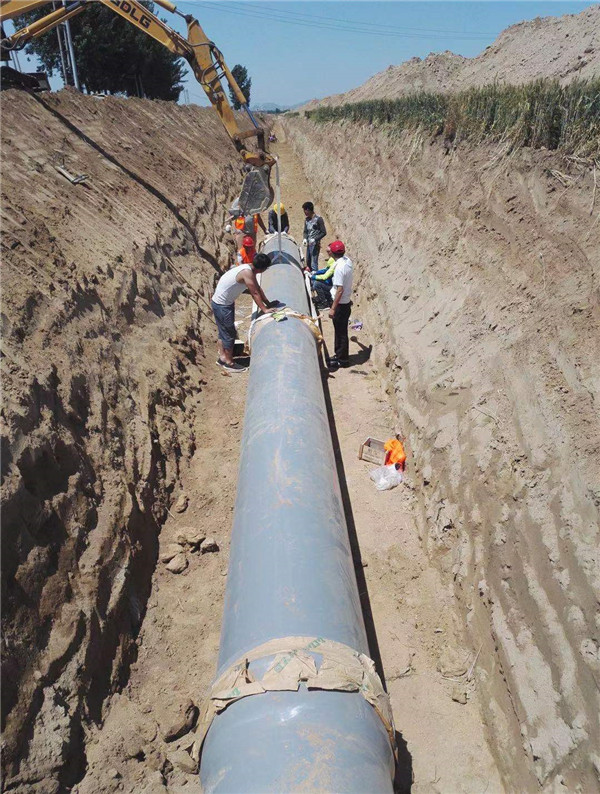Nov . 03, 2024 08:15 Back to list
water pipe fittings
Understanding Water Pipe Fittings A Comprehensive Guide
Water pipe fittings are essential components in plumbing systems, designed to connect, control, and shape the flow of water in a variety of applications. From residential homes to commercial buildings, the proper selection and installation of these fittings can significantly impact the efficiency and reliability of a plumbing system. This article will delve into the different types of water pipe fittings, their materials, and useful tips for choosing the right fittings for your needs.
Types of Water Pipe Fittings
Water pipe fittings come in various shapes and sizes, each serving specific purposes. Here are some common types of fittings
1. Elbows These fittings are used to change the direction of water flow. They are typically available in 90-degree and 45-degree angles, allowing for flexibility in pipe routing.
2. Tees A tee fitting allows for the branching of water flow. It has three openings one for incoming water and two for outgoing, making it ideal for creating a parallel line or splitting water supply.
3. Couplings Couplings are used to connect two straight sections of pipe together. They come in both slip and threaded varieties, depending on the requirements of the installation.
4. Bushings These fittings allow the connection of two pipes with different diameters. A bushing essentially steps down from a larger pipe to a smaller one or vice versa.
5. Caps and Plugs Caps seal the end of a pipe, while plugs fill an opening in a fitting. These are useful for closing off unused pipes or fittings.
6. Adapters Adapters are designed to connect two pipes with different connection types. They are crucial when transitioning from one material to another, such as from PVC to copper.
Materials for Water Pipe Fittings
The choice of materials for water pipe fittings greatly impacts their durability, corrosion resistance, and overall performance
. Common materials include1. PVC (Polyvinyl Chloride) PVC fittings are lightweight, resistant to corrosion and chemicals, making them popular for residential and irrigation applications.
water pipe fittings

2. CPVC (Chlorinated Polyvinyl Chloride) Similar to PVC but can handle higher temperatures, making CPVC fittings suitable for hot water systems.
3. Copper Copper fittings are known for their longevity and resistance to bacteria. They are commonly used in water supply lines, though they can be more expensive than plastic options.
4. Steel Steel fittings, often galvanized, are robust and can handle high pressures, making them ideal for industrial applications.
5. Brass Brass fittings offer good corrosion resistance and are frequently used in fixtures and faucets.
Choosing the Right Water Pipe Fittings
When selecting water pipe fittings, consider the following factors
1. Application Determine whether the fittings will be used for residential, commercial, or industrial purposes as this will influence material choice.
2. Compatibility Ensure that the fittings are compatible with existing pipes in terms of material and size.
3. Temperature and Pressure Ratings Understand the operating conditions, including temperature and pressure, to select fittings that can withstand these conditions.
4. Local Building Codes Always consult local plumbing codes to ensure compliance and safety in your installation.
Conclusion
Water pipe fittings play a critical role in establishing a reliable and efficient plumbing system. By understanding the various types of fittings and materials available, homeowners and professionals can make informed decisions that lead to successful plumbing projects. Proper selection and installation of water pipe fittings not only enhance the functionality of a plumbing system but also contribute to its longevity and effectiveness.
-
Durable PP Rigid Sheet: Lightweight, Chemical Resistant Solutions
NewsAug.21,2025
-
PVC Grey Sheet for Extraction: Chemical Resistant & Durable
NewsAug.19,2025
-
Durable PVC Pipe Fittings for Plumbing & Irrigation Needs
NewsAug.18,2025
-
HDPE Steel Belt Reinforced Spiral Corrugated Pipe | High Strength
NewsAug.17,2025
-
HDPE Pipe Fittings: Durable, Leak-Proof Solutions
NewsAug.16,2025
-
Premium CPVC Sheet: High-Temp & Chemical Resistant Solutions
NewsAug.15,2025

